- Home
- Ann Patchett
This Is the Story of a Happy Marriage
This Is the Story of a Happy Marriage Read online
This Is the Story of a Happy Marriage
Ann Patchett
Dedication
For Karl
Contents
Dedication
Nonfiction, an Introduction
How to Read a Christmas Story
The Getaway Car
The Sacrament of Divorce
The Paris Match
This Dog’s Life
The Best Seat in the House
My Road to Hell Was Paved
Tennessee
On Responsibility
The Wall
Fact vs. Fiction
My Life in Sales
“The Love Between the Two Women Is Not Normal”
The Right to Read
Do Not Disturb
Introduction to The Best American Short Stories 2006
Love Sustained
The Bookstore Strikes Back
This is the Story of a Happy Marriage
Our Deluge, Drop by Drop
Dog without End
The Mercies
About the Author
Also by Ann Patchett
Credits
Copyright
About the Publisher
Nonfiction, an Introducion
THE TRICKY THING about being a writer, or about being any kind of artist, is that in addition to making art you also have to make a living. My short stories and novels have always filled my life with meaning, but, at least in the first decade of my career, they were no more capable of supporting me than my dog was. But part of what I love about both novels and dogs is that they are so beautifully oblivious to economic concerns. We serve them, and in return they thrive. It isn’t their responsibility to figure out where the rent is coming from.
What I was looking for in a job was simple enough: something that would allow me to pay the bills and still leave me time to write. At first I thought the key would be to put the burden on my back rather than my brain, and so I worked as a restaurant cook and, later, as a waitress. And I was right, there was plenty of room in my head for stories, but because I fell asleep the minute I stopped moving, very few of those stories were ever written down. Once I realized that physical labor wasn’t the answer, I switched to teaching—the universally suggested career for all M.F.A. graduates—and while I wasn’t so tired, days spent attending to the creativity of others often left me uninterested in any sort of creativity of my own. Food service and teaching were the only two paying jobs I thought I was qualified for, and once I’d discovered that neither of them met my requirements, I was at a loss. Could I follow the example of Wallace Stevens and sell insurance? All I knew for certain was that I had to figure out how to both eat and write.
The answer, at least the first spark of it, came in the form of a 250-word book review of Amy Tan’s novel The Joy Luck Club. I had published several short stories in Seventeen magazine, and had asked my editor, Adrian Nicole LeBlanc—both of us twenty-five at the time—if I could have a nonfiction assignment as well. The economics were easy enough to figure: Seventeen ran one short story a month, twelve stories a year, and if I was doing my absolute best I could never hope for more than one or two of those spots. A writer of nonfiction, on the other hand, could publish an article in every issue, sometimes multiple articles in a single issue. I had finally identified a job that I more or less knew how to do that would be neither mentally nor physically exhausting.
Which is not to say that it wasn’t aggravating at times. I was asked to rewrite that book review half a dozen times, and each time I was told I had to consider yet another aspect of the novel. My word count was not increased to match these new points of interest, and more words in meant that, somewhere, other words had to come out. So I trimmed and tucked, found a single word to express five words’ worth of feeling. I explored the realm of mother-daughter relationships on the head of a pin. Once my book review was accepted, I started pitching ideas for articles to Adrian, who took the better ones to her boss, Robbie Myers. Unlike in my fiction, where I prided myself on making things up, I found these articles wanted personal experience. For every ten story ideas I came up with—“Growing Up with Horses,” or “When Your Best Friend’s a Guy,” or “How to Decorate Your Locker”—I would be given the green light to write one of them (without a contract or kill fee), and for every ten I was allowed to write, maybe one would actually make its way into the magazine. The one that was accepted would then be rewritten ten times as I received round after round of notes, not only from Adrian and Robbie, but from various editors in other departments and all their interns, who were honing their own editorial skills. I never felt that way when I was fifteen, read the note most regularly penciled in the margins. And while I wanted to say, Did you grow up in Tennessee? Did you go to a Catholic girls’ school? Did you stay home with your parents on the weekends and never go on a single date?, I refrained. If they wanted to see themselves reflected in my piece, I would put them there. I would find a way to wedge in every single one of them and stay within the confines of my word count.
Seventeen magazine, where I never had an office and rarely visited, was the site of my apprenticeship; I learned how to write an essay there, just as I had learned how to write fiction at Sarah Lawrence College and the Iowa Writers’ Workshop. Whereas fiction was singularly mine—I would never have changed a short story to reflect an editor’s experience—nonfiction was collectively ours. I readjusted the slant of an article to satisfy the vision of various editors, or spiced up the action to meet the attention span of the readers. I saw my best paragraphs cut after everything was finished and agreed upon because the art department wanted more space for their illustration. I sliced a piece in half because an ad was suddenly dropped, and fewer advertising dollars meant fewer editorial pages. I was learning how to work for a magazine by shaping my writing, yes, but I was also shaping myself: it was my aim to be flexible and fast, the go-to girl.
Years later, a magazine editor called to say that they were closing the issue the next day and their lead article, a long piece about procrastination, had fallen through at the last minute. Could I write something, anything, by tomorrow? Of course I could. This was the person I had trained myself to be.
Magazine work was an uncertain business—assignments were killed on a whim, checks were late, and there was always someone who owed me expenses—but I never lost sight of how much easier it was than busing tables or grading papers. The years spent in the freelance trenches eventually paid off; I would go on to have some remarkable assignments. I’ve toured the great opera houses of Italy, gone on a mock honeymoon in Hawaii, driven an RV across the American West, all on someone else’s dime. Whenever people ask how they can get those same kinds of assignments, I recommend what worked for me: eight years writing freelance articles for Seventeen.
In my mind, fiction and nonfiction stayed so far away from each other that for years I would have maintained they had no more a relationship than fiction and waitressing. Writing a novel, even when it’s going smoothly, is hard for me, and writing an article, even a challenging one, is easy. I believe nonfiction is easy for me precisely because fiction is hard; I would always rather knock off an essay than face down the next chapter of my novel. But I’ve come to realize that while all those years of writing fiction had improved my craft as a writer across the board, all those years of writing articles, and especially the early years at Seventeen, had made me a work
horse, and that, in turn, was a skill I brought back to my novels. Seventeen also went a long way to beat any ego out of me. Somewhere along the line I learned to experience only the smallest, most private stabbing sensation when I watched my best sentences cut from an article because they did not advance the story. Ultimately, this skill came to benefit my fiction as well. The conversations I had had so often with magazine editors were now internalized. I could read both parts of the script. Did I think that was a beautiful scene I had written? Yes, I did. Did it further the cause of the novel? No, not really. Could I then delete it? It was already gone.
I wrote for Seventeen until I was thirty; by then I had exhausted everything I remembered about growing up. I then moved on to fashion magazines, the way a girl who has cut her teeth reading Seventeen goes on to read Harper’s Bazaar. I got new assignments not by sending out clippings and a résumé, but by doggedly following editors and friends as they advanced through their careers. Someone I knew at Seventeen went to Elle, which meant I could now write for Elle. My friend Lucy wrote a piece for Vogue, which meant I now had a contact at Vogue. When that editor got a job at GQ, I added GQ to my list of employers. In this way my career expanded exponentially. A friend of mine from college went to work for Mercedes-Benz Magazine (who knew such a thing existed?), and so I wrote articles that appealed to the owners of luxury cars. Later, my friend Erica Goldberg Schultz became the editor of Bridal Guide and made me a contributing editor, which meant I paid my bills by writing about the challenges of finding cake-toppers that resembled the actual bride and groom. As trivial as this work was, I had no intention of setting my sights any higher; I wanted to finish my article on ballroom dancing or boutique farming and get back to my novel. Writing fiction, after all, was what I did.
In truth, I wasn’t the one who decided to better myself; one of my editors did it for me. When Ilena Silverman, my editor at GQ, got a job at the New York Times Magazine, she took me with her, along with another writer she favored, my friend Adrian LeBlanc, who had long ago left Seventeen for a reporting career. Though I felt intimidated and unqualified to write for the Times, I realized magazine writing had given me yet another skill (also essential to fiction): the ability to fake authority. The first assignment I was given was a small piece on “nutraceuticals.” Did I know what they were? No, I did not. Did I mention that to Ilena Silverman? No again. I will never forget calling an executive at Monsanto to discuss the high-beta-carotene cooking oil they were developing. “This is Ann Patchett from the New York Times,” I said to the assistant. I had never had a call put through so quickly in my life.
For the most part, I loved my editors and the brief, intense intimacies that could come from working together on a piece. I loved Ilena Silverman so much I would have written anything she asked me to, just for the chance to spend hours talking with her on the phone. Had we actually been friends who spent time together, I’m sure I wouldn’t have written for her, as her editorial style drove me mad. She never seemed to know quite what she wanted where I was concerned, but she felt sure she’d know it when she saw it. That meant I was asked to rewrite pieces from every conceivable angle so that she could say, No, that wasn’t what I had in mind. It was like having someone ask you to move the living room furniture over and over again: Let’s see that sofa under the window. No, no, I don’t like it under the window; let’s see what it looks like next to the door. Still, thanks to her intelligence and good company, I remember the pieces we worked on together with great fondness. She was trying to drag me to the smarter, better places she could see inside her own mind.
While I was still writing for the Times, I started on the best freelance job of my career: writing for Bill Sertl and Ruth Reichl at Gourmet. If the New York Times Magazine challenged my thinking, Gourmet expanded my art. What Ruth and Bill wanted to see was how much warmth and exuberance could be packed into a single piece. Working for them was like having the world’s most supportive parents. They were eager to get behind everything I wanted to do. When I was working on Bel Canto and wanted to learn more about opera, they packed me off to Italy. When I was writing State of Wonder and wanted to take a boat up the Amazon in Brazil, Bill found me a boat, though not one in Brazil. “It’s in Peru,” he said, “but let me tell you, the jungle’s the jungle.” I ate the food, made notes on hotel rooms, and participated in available tourist activities, all the while soaking up the atmosphere for my next novel. Once I called Bill after what had been months of overlapping houseguests and told him I wanted to check into a fancy hotel by myself for a week and never leave the property. “Brilliant!” he said. “I love it.” And so I took up residence at the Hotel Bel-Air. The resulting piece, “Do Not Disturb,” was one that no other magazine would have assigned, and it’s probably the best piece of travel writing I’ve ever done. Those were the salad days of freelance writing. I can only hope I gave back to Gourmet half of all it gave to me.
Considering the limitless freedoms of fiction (make up the people and all their problems; make their houses, their rivers and trees; decide when they’re born and when they’ll die; turn the book in whenever you’re finished), I took some real comfort from my day job. Like a soprano’s boned corset, the built-in restrictions provided both support and something to push against. I often took ideas to editors, but just as often they brought ideas to me. At times, I found myself writing on subjects I knew nothing about in a voice that was more the magazine’s than my own. Whom I should talk to and where I would go and when the piece was due were decisions that weren’t often mine to make, and that was fine. My only true obsession was with word count. I saw the length of essays as track-and-field events: the 900-word essay was the shot put, 1,200 the high jump, 2,000 the long jump. Each one had a particular pacing and shape that I understood deeply. “Just write it as long as you want,” some editors liked to say. “We’ll cut it down later.” But a 2,000-word essay that’s cut to 800 words winds up feeling irrevocably mangled to me, as if I can see the lines of stitching running between the paragraphs.
My fiction, which had for so many years failed to provide me with a living wage, was suddenly able to buy me a house after the publication of Bel Canto in 2001 (in the same way I suppose a well-cared-for dog will occasionally dig up a small chest of gold in the backyard—not that mine ever did). I was free to quit my day job, and that was, of course, the point at which I realized how much I liked my day job. Still, I knew there were things I needed to change. Throughout the years when I had been supporting myself by writing nonfiction, my modus operandi had been to accept all comers, and while I found that habit very hard to break (it’s difficult to convince the freelance brain that the well isn’t going to run dry tomorrow), I tried to be a little more discerning in the assignments I accepted. No, I would not cover a country music star’s soup party in Atlanta. I would not go on a group-therapy Outward Bound trip that would necessitate authorial nudity in a natural hot spring. (You may be wondering if I’m making that up. I’m not.) I started thinking more about the stories I wanted to tell, regardless of whether any magazine wanted to buy them, and while I was still obsessed with word counts, I let some of those stories get longer. When my friend Sister Nena had to find an apartment and live by herself for the first time at the age of seventy-eight, I called Patrick Ryan at Granta and asked how much space I could have, not how much they could pay. Then I wrote “The Mercies.”
In the years I made my living writing nonfiction, I thought of the work I did as being temporary, with a life span that would, in most cases, not exceed a magazine’s last tattered days in a dentist’s waiting room, but the essays kept resurfacing. People would bring them to book signings and show them to me. I read this when my grandmother died. Someone gave this to me when I got divorced. They told me my story was their story, and they wondered if there was more, something they might have missed. I marveled that a back issue of the Atlantic could have stayed around for so long, or that the subjects of the articles were still resonant. The job of
these essays had been to support art, not to be art, but maybe that was what spared them from self-consciousness.
Many, many years ago, in an effort to save space, I started tearing up the magazines I wrote for, keeping my articles in a big plastic bin and throwing away the other pages. I had thought in the past about putting together a collection of essays, but every time I tried to sift through what was a fairly enormous body of work, I got stuck: if writing a personal story in a magazine was like putting out a single piece of a jigsaw puzzle, then collecting those essays in a book would be like publishing the finished puzzle, which would look very much like a map to my house. I always wound up snapping down the lid again.
What finally made the difference was my friend Niki Castle, who has long taken a deep personal interest in my essays. When I continued to refuse, reconsider, and stall, she took the bin away, and later came back with a list of the essays she thought could make a book. While nothing from my earliest days of Seventeen and Bridal Guide was included (those pieces were meant only for the young and the recently engaged), she had chosen pieces from every other point in my career to date. She told me that these essays deserved the chance to sit together, and that by keeping company, they would inform one another. I claimed not to agree, but I found myself writing new essays to fill in the gaps. (After all, if there was going to be a book, there had to be something about the bookstore.) I read through the collection Niki had put together, took out some of her choices, added in nothing from the bin that she had passed over, and then got back to writing. Byliner and Audible both contacted me in the same month asking for essays that would be in the neighborhood of 15,000 words, and I said yes before I had any idea what I would write about. After a career built largely on 1,200-word pieces, the possibilities suggested by so much open space were dazzling. I had to ask myself what it was I really wanted to think deeply about. The answer was fiction writing for Byliner (“The Getaway Car: A Practical Memoir about Writing and Life”), and, for Audible, marriage (“This Is the Story of a Happy Marriage”). By the time those pieces were written it was obvious even to me that I was working on a book.

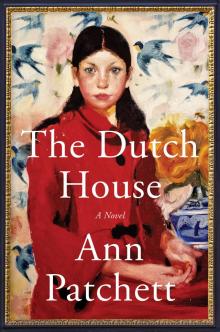 The Dutch House
The Dutch House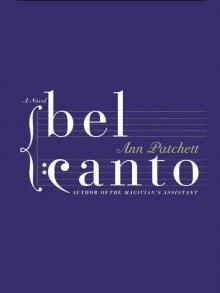 Bel Canto
Bel Canto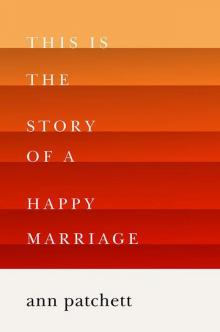 This Is the Story of a Happy Marriage
This Is the Story of a Happy Marriage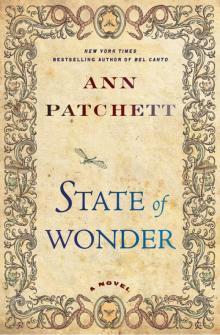 State of Wonder
State of Wonder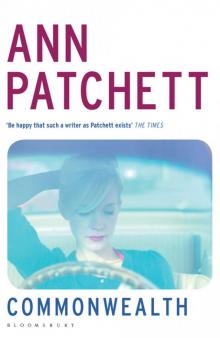 Commonwealth
Commonwealth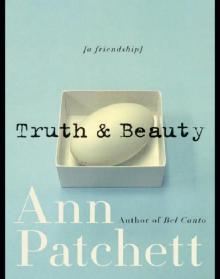 Truth & Beauty: A Friendship
Truth & Beauty: A Friendship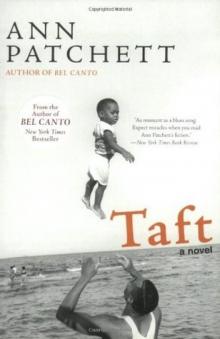 Taft
Taft What Now?
What Now?